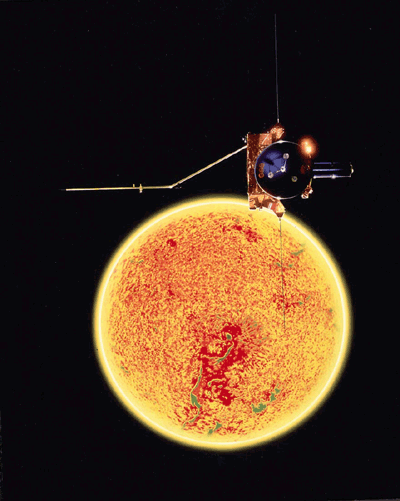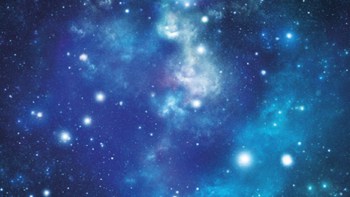The Ulysses spacecraft is about to fly under the south pole of the Sun, just as our local star reaches a peak in its 11-year cycle of activity. Ulysses crosses the solar latitude of 70° south on 8 September, and will spend four months passing over the southern polar region. The spacecraft last explored the region six years ago during a lull in the Sun's activity, and astronomers expect the current stormy solar conditions to make the return visit particularly productive.

“Solar activity has been increasing for the past three or four years, and now Ulysses has started observing much more disturbed conditions at increasing solar latitudes,” explains Andre Balogh of Imperial College, a principal scientific investigator on the mission. “The passes over the poles of the Sun will show a different kind of interplanetary environment from the one we observed in the mid-1990s. Instead of coronal holes covering the polar regions, hot and active regions are generating a surprising amount of disturbance over the whole Sun now.” Ulysses provides this unique perspective because it is the only spacecraft to have flown in an orbit outside the ecliptic, the plane in which the planets orbit the sun.
The high-level solar winds are currently chaotic and blustery, in contrast to the fast – 750 km s-1 – but steady conditions encountered in 1994. The last passage over the south pole revealed a surprisingly high level of fluctuation in the magnetic field that restricts the influx of cosmic rays into our solar system. It also showed that the boundary between the fast solar winds and the more irregular equatorial winds was unexpectedly distinct.
Ulysses, a joint ESA/NASA mission, will approach the equator early next year and continue its journey over the northern polar region, completing its second orbit of the Sun in 2004. “By then, Ulysses will have gathered the only set of observations above the solar poles covering more than a complete 11-year solar cycle”, says Balogh. “In the absence of follow-up missions, Ulysses will continue to be the benchmark for our understanding of the heliosphere [the region of space dominated by the Sun and its solar wind] for another generation.”



